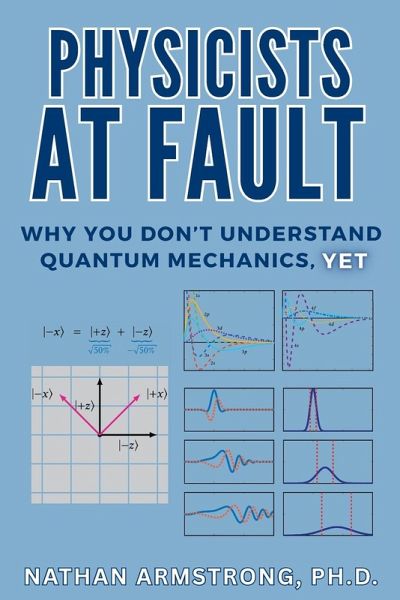
Physicists at Fault
Why you don't understand quantum mechanics, yet
Versandkostenfrei!
Versandfertig in 1-2 Wochen
75,99 €
inkl. MwSt.

PAYBACK Punkte
38 °P sammeln!
What famous professors won't tell you, this book will. Physicists at Fault: Why you don't understand quantum mechanics, yet is written for those tired of the same old stories and who want to learn the actual science of quantum mechanics. It is for those who want to take the next step in their understanding of this fascinating subject. In this 415-page book, you will find: ¿¿170+ color images and graphs spread across 100+ figures, all specifically created to enhance your understanding ¿¿critical examinations of falsehoods told by physicists to both the public and students of physics that th...
What famous professors won't tell you, this book will. Physicists at Fault: Why you don't understand quantum mechanics, yet is written for those tired of the same old stories and who want to learn the actual science of quantum mechanics. It is for those who want to take the next step in their understanding of this fascinating subject. In this 415-page book, you will find: ¿¿170+ color images and graphs spread across 100+ figures, all specifically created to enhance your understanding ¿¿critical examinations of falsehoods told by physicists to both the public and students of physics that the postulates of quantum mechanics taught to students are, at times, in disagreement with experiments ¿¿ a Goldilocks amount of math to see past the misconceptions introduced by pop-sci physicists ¿¿ writing that is semi-academic and in straightforward language without appeals to mystical or inconsistent concepts By the end of this book, you should be able to: ¿¿ Understand superposition at a deeper level ¿¿ Let go of the classical idea of electrons as tiny spheres or geometric points ¿¿ Comprehend the complex-valued nature of wave functions ¿¿ Know how Schrödinger's equation governs the time-evolution of wave functions ¿¿ Read and interpret basic Dirac notation ¿¿ Visualize spin and the electric charge associated with wave functions ¿¿ Comprehend the 720-degree rotational symmetry of electrons ¿¿ Distinguish between three commonly confused ideas that are often lumped together as "the uncertainty principle" ¿¿ Spot where well-known professors oversimplify or misrepresent the single-slit and double-slit experiments ¿¿ Use the postulates of quantum mechanics as a conceptual framework-even if they're imperfect














